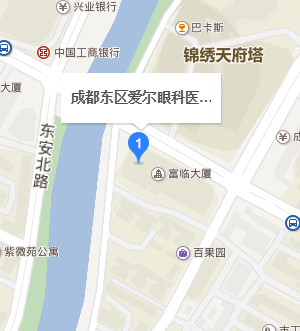The well-being of our vision is too important to be neglected because 80% of our memories are created by what we see in day-to-day life. It matters our life quality. Indeed love your children should start from caring their eyes. More attention should be paid especially to infants and young kids who are unable to complain any vision problems. The following
Please beware if the following warning signs are noted
- Eyes appear white
- Eyes are unaligned and unable to fix onto objects
- Child has hard time tracking objects by 3 months
Internal eye exams may be necessary for premature babies to rule out possible retinopathy or Prematurity.
In the early 4 months’ babies can only perceive objects 8-10 inches from their face. Hand and eye coordination will begin as they start stacking blocks and track moving objects. Usually minor crossing of the eyes will occur as coordination is yet lacking. Colored vision is expected to develop at 5 months. You may find as they attempt to examine smaller objects, a cheeky game of hide and seek allows them to build on facial and object recognition.
At 8 months your baby should have clear vision and the ability to calculate distance between objects. Baby’s found to crawl during their growth will have better coordination skills and full 3D interpretation of their surroundings to pick up small objects using their thumb and forefinger. Although in rare cases glasses may be needed.
By 12 months they should be able to tell between near and far. At the two year mark your child should have the capabilities to fully immerse in exploring the environment. Make sure you keep sharp edges especially cabinets away from your child. They also should be encouraged to scribble and draw to create interest in primary colors, visual books cam be helpful in this instance. Colour blindness could also be identified at an early stage, if signs of any struggle to decipher between reds, browns and oranges or blues and purples.
Most children are able to have an eye test at age 4 when they are able to decipher their alphabet. Nowadays as use of computer and tablet in children rises, Myopia/short-sightedness may occur early. An ophthalmologist visit is necessary to screen your child’s eye health.
During daily life, there may be an eye sight problem and an eye doctor visit is necessary if you notice the following in child
- Sitting too close to the TV or holding a tablet too close to eyes
- Sensitivity to light
- Squints when reading
- Frequently eye rubbing
- Reports headaches/eye paint
As eyes continue to develop it becomes increasingly important to have regular eye test, the earlier problems are identified the easier they can be treated.
Amblyopia (Lazy Eye)
Amblyopia, often known as “lazy eye”, is an early childhood condition where the child’s vision does not develop properly, in which the eye and brain do not work well together. It results in decreased vision in an eye that otherwise typically appears normal. It is the most common cause of decreased vision in a single eye among children and younger adults.
Most commonly amblyopia occurs as the result of a squint, poor alignment of the eyes, an eye being irregularly shaped such that focusing is difficult, or clouding of the lens of an eye, or because two eyes have different refractive errors. The latter can lead to poor vision in the absence of a noticeable symptom and may not be detected unless vision is specifically tested.
If the problem is detected early, successful treatment is possible and treatment time is shorter. If it is detected after the age of four, the success rate would be very low. Since the child is usually too young to complain of poor vision, so vision testing is recommended for all children around the ages of four to five.
Treatments & Suggestions
When correcting amblyopia, the good eye is patched in order to let the child use the lazy eye, often for weeks or months. The patch is usually used together with prescribed eyeglasses, thus the laze eye will be best encouraged to work when the child is doing detailed work such as reading, writing, drawing, jigsaws etc.
Amblyopia treatment is most effective between age 3-6. From 7 and above, the treatment may take as long as 1 to 2 years in order to get satisfactory results. By the age 12, since the eyes are fully developed, amblyopia treatment may not be able to take effect.
Strabismus (Squint)
Strabismus, or squint, also called crossed eyes, is a condition in which the eyes do not properly align with each other when looking at an object. The eye which is focused on an object can alternate. The condition may be present occasionally or constantly. If present during a large part of childhood, it may result in amblyopia or loss of depth perception. Adults may have double vision.
Strabismus can occur due to muscle dysfunction, farsightedness, problems in the brain, trauma, or infections. Risk factors include premature birth, cerebral palsy, and a family history of the condition. Types include esotropia where the eyes are crossed; exotropia where the eyes diverge; and hypertropia where they are vertically misaligned. They can also be classified by whether the problem is present in all directions a person looks (comitant) or varies by direction (incomitant).
Treatments & Suggestions
Treatment of strabismus depends on the type and the underlying cause, which may include the use of glasses and possibly surgery. Some types benefit from early surgery. Strabismus surgery attempts to align the eyes by shortening, lengthening, or changing the position of one or more of the extraocular eye muscles. However Strabismus surgery does not remove the need for a child to wear glasses.


